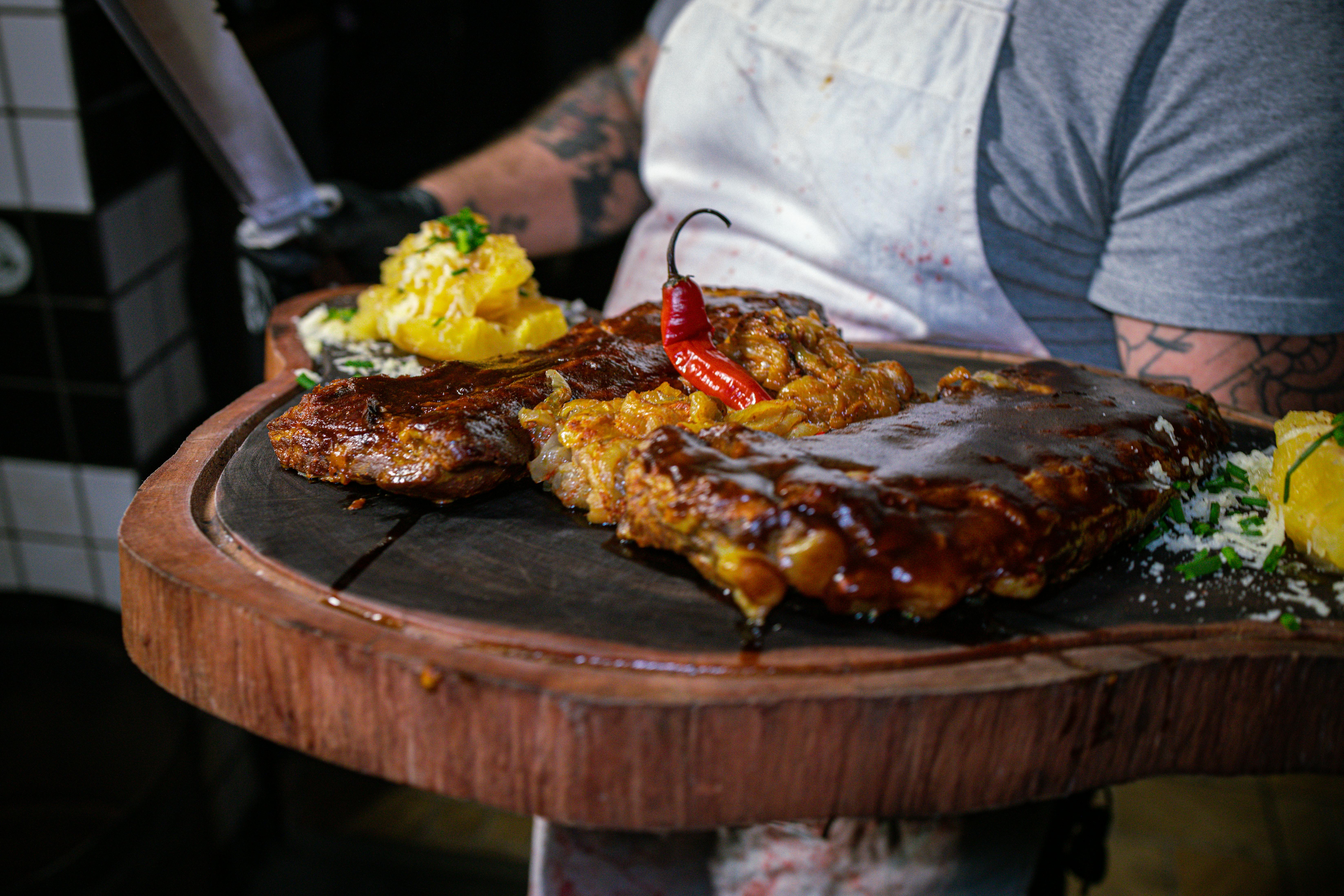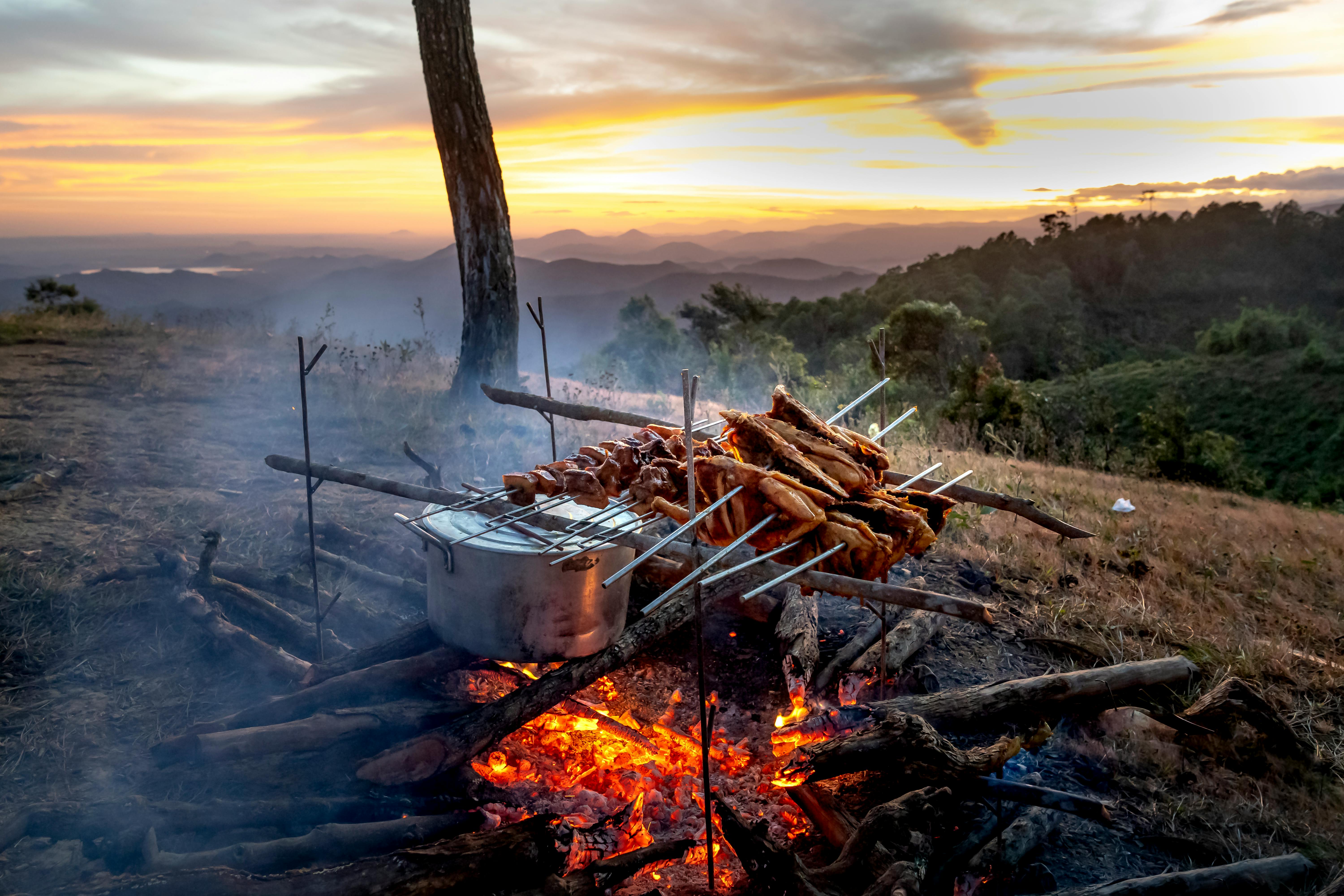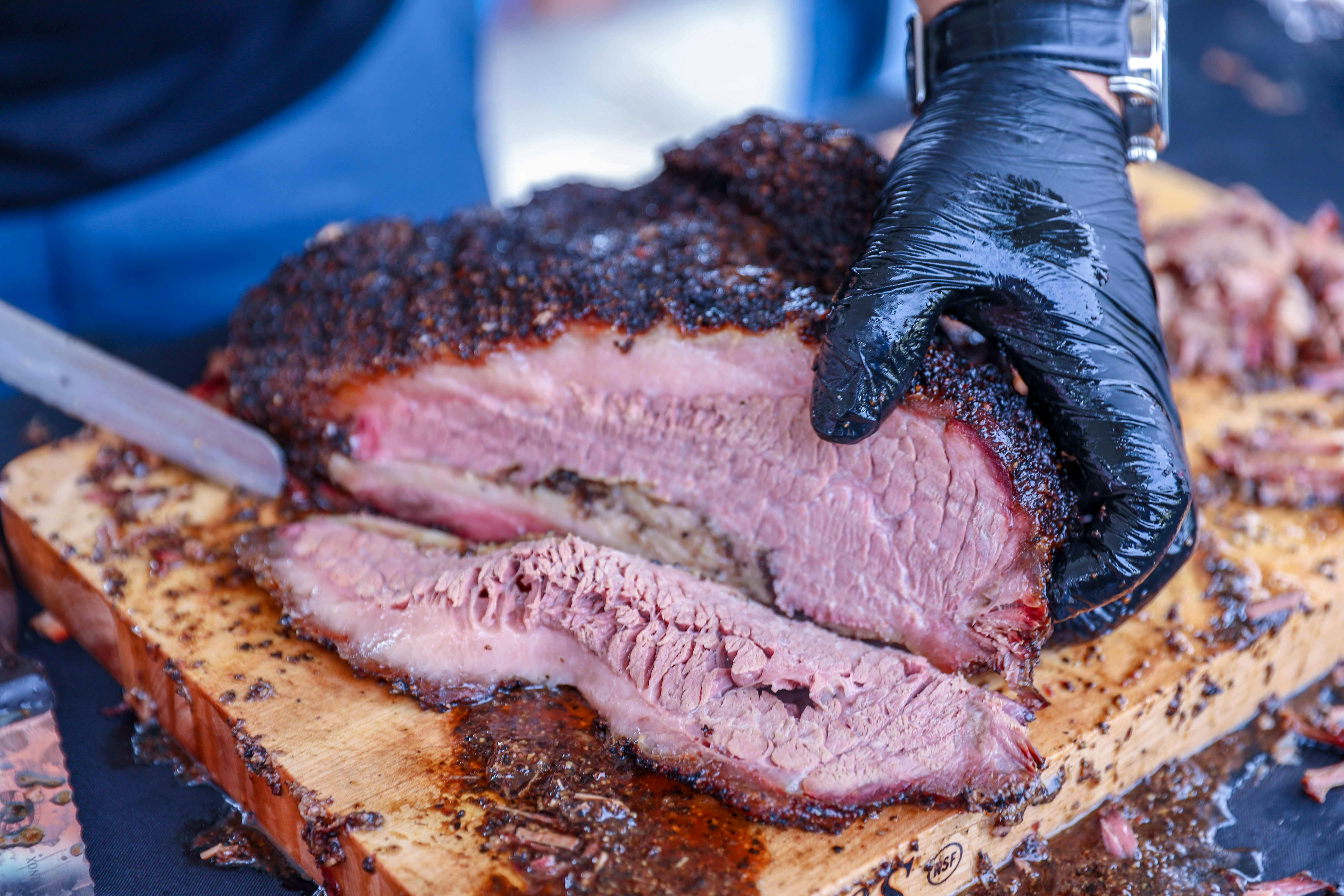The Four Radically Different Styles of Texas Barbecue

What do you think of when you hear “barbecue?” If I’m being honest, as I was growing up I only would have thought of hamburgers, hot dogs, and chicken. I wasn’t raised in much of a barbecue area. However, in some regions of the country (particularly along the south and southwest of the states), barbecue presents a whole array of different meats and styles of cooking. Kansas City barbecue is very different from South Carolina barbecue.
I began delving deep into barbecue several years ago and started with Carolina-style recipes. I’ve made more pork butts than I can count, and I’ve experimented with and developed several signature sauces that I proudly display at cookouts.
However, now that I’ve gained a shred of confidence in my cooking, I’ve started casting my eye at what some people consider the crown jewel of American BBQ. I don’t know if that’s true, but my next goal is certainly aimed at the throne of cooking beef: Texas.
Texas itself is divided into four major styles of barbecue, each super distinct from each other. Whenever work finds me in Texas, I double-check which region I’m going to and plan accordingly for the style of barbecue I want to go hunting for. And boy, do I eat well when I know what to look for!
I want to give you a little sneak peak into the barbecue world of Texas. Maybe you’ll want to try your hand at some of these styles or plan your restaurant stops accordingly if you ever visit this great state.
Eastern Texas BBQ

Eastern Texas BBQ is perfect for people who like their meat smothered in sauce. Beef, pork, and sausage is cooked slowly over hickory wood until it's tender and practically falling apart. This style is all about the sauce: a tomato-based concoction that’s sweet, tangy, and applied in a generous slathering over the meat. It’s reminiscent of classic Kansas City style BBQ sauces.
Geographically, it makes sense that Eastern Texas would feature a lot of sauce—the further east you travel in the U.S., the more sauce you find (from Alabama’s famous white sauce to South Carolina’s columbia gold).
To be honest, I have a love-hate relationship with the Eastern Texas style. Overall it’s a wonderful idea, and a good barbecue sauce is nothing short of literal kitchen alchemy. However, due to the widespread marketing and use of cheap, low-quality barbecue sauces in the U.S., I’m generally disappointed when I come across someone trying to emulate the Eastern Texas style. In my personal experience, the under-educated in this style tend to hastily make a cut of meat that ends up being too touch, then they dump a bottle of their dad’s favorite BBQ sauce on it and call it good. That’s not at all what they’re meant to do!
This seems like one of those pursuits where you really need to respect what made it great in the first place and only start branching out once you’ve mastered the basics. However, once you’ve had the real stuff, you’ll never go back. Good Eastern Texas BBQ might be the most addictive thing I’ve ever eaten.
Western Texas BBQ

Over in West Texas, the style is also known as "cowboy style" or "West Texas BBQ." The meat—generally chicken, sausage and ribs—is cooked via direct heat over an open pit. This results in a much faster cook time (thus the general lack of brisket and other tough cuts of meat), which leads to a reduction in the smokey taste we usually associate with Texan BBQ.
Western Texas BBQ evolved out of necessity. Unlike the more settled, agricultural regions of Texas where slow-smoking meats over indirect heat could be carefully monitored, West Texas had a more transient population of ranchers and cowboys who needed to cook their meals quickly and efficiently. Picture it: long cattle drives across the dry, arid plains, cowboys needing to cook up a meal quickly, with whatever they had on hand. They didn’t have the luxury of slow-cooking for hours or fussing over elaborate marinades. Instead, they had mesquite wood, a staple of the West Texas landscape, and they used it to grill meat quickly over an open flame. This method was efficient, practical, and suited to the rough-and-tumble lifestyle of the cowboy.
The tradition stuck, and over time, it became a defining feature of the region’s BBQ style. I personally love chicken made a la Eastern Texas. I even prefer it to Alabama-style BBQ with their special white sauce.
Central Texas BBQ

This is the holy grail for purists who believe that sauce is nothing but a crutch for those who can’t cook meat properly. Here, the meat—usually brisket, pork ribs, or sausage—is cooked low and slow over indirect heat, using oak or pecan wood. The meat is seasoned simply with salt and pepper because in Central Texas, it’s all about the quality of the meat and the smoke. They’ll serve it with a slice of white bread and some pickles and onions as a palate cleanser.
I asked for a side of sauce the last time I ordered BBQ in Central Texas, and I got some raised eyebrows. No, I’m not kidding (though in fairness, I asked for it just in case their meat wasn’t all that good, and maybe they could tell). The point is Central Texas BBQ is almost austere in its simplicity. The seasoning is usually limited to just salt and pepper, with no heavy sauces or elaborate rubs. In Central Texas, it’s believed that if you need sauce to make your BBQ taste good, you’re doing something wrong.
Central Texas BBQ owes much of its identity to the German and Czech immigrants who settled in the region during the 19th century. These immigrants brought with them the tradition of smoking meats, particularly sausages, which they adapted to the local environment. The idea was to preserve and enhance the flavor of meat through smoking—a method that didn’t require refrigeration and could be done in large quantities. As this style really took off, pitmasters often served the smoked meat on butcher paper with nothing more than a slice of bread, pickles, and onions. This minimalist approach became a hallmark of Central Texas BBQ, where the focus is on the quality of the meat and the smoking process.
I’d have trouble saying Central Texas is my favorite style of BBQ because I also love me some really good sauce… but I have a deep respect for the people who do it well. There are no secret rubs, proprietary sauces, or cooks sworn to secrecy. Usually it’s just a small operation run by an ambitious and obsessive pitmaster. They’ll tell you everything there is to know about smoking meat, and then sit back and say, “Well, good luck.”
Southern Texas BBQ

If you’ve ever heard the terms “barbacoa” and “Tex-Mex,” they come from here. Southern Texas BBQ is where you see the Mexican influence shining through. Here, the meat is often marinated in a mix of spices that might include cumin, chili powder, and other seasonings you’d typically find in Mexican cooking. The meat is then slow-cooked, usually over mesquite, and served with sides like rice, beans, or tortillas. It’s BBQ with a kick, perfect for those who like their food with a bit of heat and flavor complexity.
The story behind the Southern Texas style is pretty straightforward: there’s a ton of Mexican influence in Southern Texas, which borders Mexico. This brings in a ton of Mexican food, and when you mix their amazing and complex culinary traditions with our own, you get an incredible result.
If you find yourself in a good Southern Texas restaurant, get some brisket tacos or enchiladas, smoked fajitas, BBQ quesadillas, or pulled pork tamales for me.
That’s a pretty good summary of Texas BBQ. In truth, each of these could be an article of their own, so if you want more detail on any of these, just let me know. Otherwise, I might start exploring in other parts of the U.S. (I have the most experience cooking somewhere along the Carolina’s style).
Drop a comment below and let me know your favorite style or which one you just became the most interested in trying.
 Matthew Christensen
Matthew Christensen
Weekly Newsletter Contributor since 2023
Email the author! matthew@dvo.com
